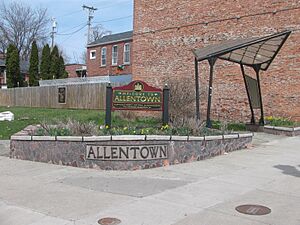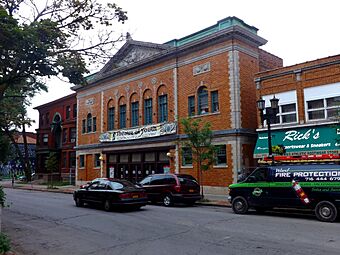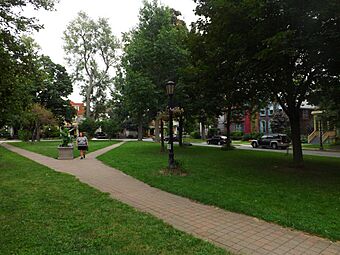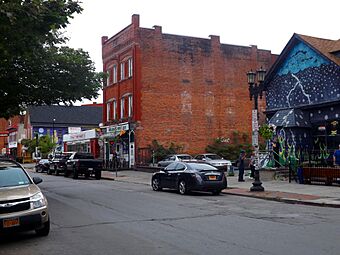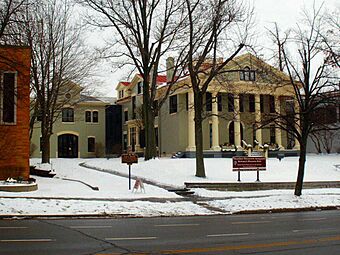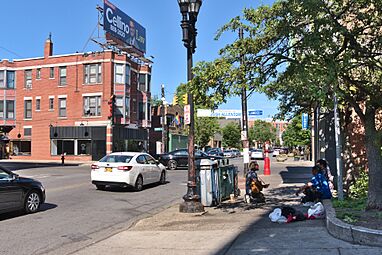Allentown, Buffalo facts for kids
Quick facts for kids |
|
|
Allentown Historic District
|
|
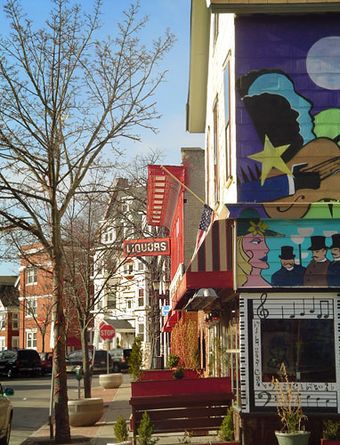
Allen Street Hardware Cafe, with the Days Park Commons in the background
|
|
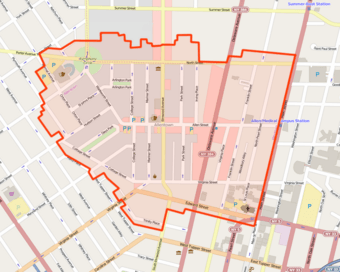
Allentown Historic District map (2012)
|
|
| Location | Buffalo, New York |
|---|---|
| Landscape architect | Frederick Law Olmsted, et al. |
| Architectural style | Stick/Eastlake, Italianate, Queen Anne |
| NRHP reference No. | 80002605 |
| Added to NRHP | April 21, 1980 |
Welcome to Allentown, a lively neighborhood in Buffalo, New York! It's famous for its unique style and history. This area is also home to the special Allentown Historic District.
Contents
Discovering Allentown's Past
Allentown gets its name from Lewis F. Allen (1800–1890). He arrived in Buffalo in April 1827. Mr. Allen worked as a financial manager for an insurance company.
He was also a farmer. He needed a place for his cattle to graze. His neighbor, Thomas Day, suggested some land. This land was between Buffalo and Black Rock. Allen's cattle path later became known as Allen Street.
Lewis F. Allen helped start important places. He was one of the founders of the Buffalo History Museum and Forest Lawn Cemetery. He is buried there.
Allen was married to Margaret Cleveland Allen. She was the aunt of future president Grover Cleveland. Allen introduced Grover to many important people. This included a law firm where Cleveland later worked. This helped him start his law and political career.
Exploring Allentown's Location
Allentown is the first neighborhood north of Downtown Buffalo. It borders the downtown theater area to the south. To the north, it reaches North Street. Normal Avenue is its western edge. Main Street forms its eastern border. The neighborhood is mostly centered around Allen Street and Elmwood Avenue.
Allentown is known for its creative community. Many artists live here. It's a welcoming place for people with unique styles. Residents care deeply about the neighborhood's historic look. Allentown is a top spot in Buffalo for nightlife, dining, and antique shopping.
Allentown's Historic Charm
The Allentown Historic District is a special area. It was added to the National Register of Historic Places in 1980. The district was made even bigger in 2012.
It includes the Kleinhans Music Hall. This hall is also listed on the National Register. It's even a National Historic Landmark. The Birge-Horton House on Delaware Avenue is also listed.
The original district in 1980 had about 733 buildings. These buildings show many different styles. You can see Gothic Revival, Italianate, and Queen Anne styles. There are also Stick/Eastlake and Colonial buildings.
Parks in the Historic District
Three park areas are part of the district. Two of them were redesigned by Frederick Law Olmsted. He was a famous landscape architect. He also designed Symphony Circle. This was part of his big plan for Buffalo's parks.
After his city plan, Olmsted redesigned Day's Park and Arlington Park. Day's Park was named after Thomas Day. He donated his land to the City of Buffalo. In Day's Park, Olmsted added a circular walkway. This was to stop students from walking on the grass. A sandstone planting area from that time is still there. Arlington Park was home to Frank Lloyd Wright for a while. He was another famous architect.
The new boundaries added about 320 more properties to the historic list.
Must-See Places in Allentown
- Allendale Theater - This is home to the Theater of Youth.
- Arlington Park - Redesigned by Frederick Law Olmsted. Frank Lloyd Wright lived here while working in Buffalo.
- Butler Mansion - Now it's UB's Jacobs Executive Development Center.
- Day's Park - Also redesigned by Frederick Law Olmsted.
- Kleinhans Music Hall - Home to the Buffalo Philharmonic Orchestra.
- Symphony Circle - Part of Buffalo's large park system. Frederick Law Olmsted designed it.
- Wilcox Mansion - This is where Theodore Roosevelt became president.
- The Nickel City Housing Cooperative - Buffalo's first single-family housing cooperative. It's in the historic Granger Mansion.
- Trinity Episcopal Church - Known for its beautiful stained glass windows.
Allentown Art Festival: A Creative Celebration
The Allentown Art Festival is a big event. It was first called the Buffalo Art Festival. Jason Natowitz started it in 1958. It began as a small meeting to help local businesses.
This meeting led to the Allentown Village Society. By August, plans for an outdoor art show were made. The first show happened in September 1958. Only 50 artists took part. But the event was a huge success!
Louis Cherenzia, one of the founders, said it was "the most colorful cultural event in Buffalo" since the Pan-American Exposition. After the show, everyone agreed it was a hit. They quickly planned for a second annual festival.
"The Buffalo Art Festival" soon became known by its location. It was in Allentown. So, its name changed to "Allentown Art Festival."
The Allentown Art Festival has grown a lot over 50 years. The Allentown Village Society, Inc. and its volunteers still support it. Their hard work has helped the neighborhood. It has made the Allentown Art Festival a beloved tradition.
Images for kids


